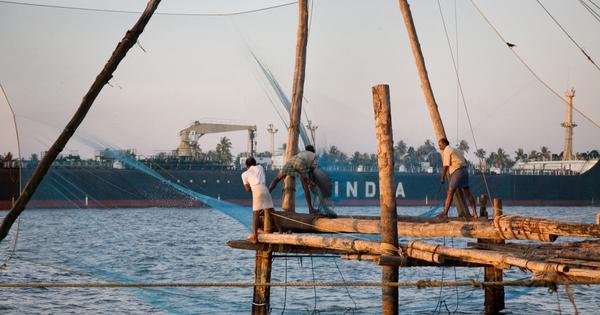Climate Change and Its Impact on India’s Fisheries
A Warming World and Its Effect on Fisheries
With 2024 being the hottest year on record, global warming is a reality. This raises concerns about how India’s fisheries sector, worth thousands of crores, will be affected by changing climate conditions. Research suggests that certain fish species may become scarce in the coming decades, and some fishing areas in India are more vulnerable to climate change than others.
India is the world’s second-largest fish-producing nation, contributing around 8% of global fish production. The country has diverse fisheries and aquaculture resources, including reservoirs, floodplain wetlands, ponds and tanks, brackish water, saline/alkaline affected areas, rivers and canals, and a coastline of 8,118 km. The estimated potential of fish production in India is 22.31 million tonnes.
From 2013-14 to 2022-’23, fish production in India increased from 9.6 million tonnes to 17.5 million tonnes, growing at an annual rate of 9%, the highest growth rate in agriculture and allied sectors.
Climate Change and Its Impact on Fisheries
Climate change is disrupting the physical and chemical processes that marine and coastal ecosystems rely on. The ocean is becoming more acidic, making it difficult for corals and shell-forming organisms to build their skeletons and shells. Oceanographic patterns and ocean circulation are also changing, which could drastically alter the cycle of marine ecosystems.
Rising sea surface temperatures are causing many economically harvestable fish stock to migrate to cooler waters, leading to a shift in fish distribution and affecting fish catch. Rising temperatures are also causing a decline in dissolved oxygen levels in inland water bodies, making aquatic species susceptible to diseases due to weakened immune systems.
Some fish species, such as Indian mackerel, are shifting to higher latitudes and deeper water due to rising temperatures. Mackerel accounts for the highest total landings by species nationally and made up nearly 10% of all marine fish landed in the country in 2023. However, its exploitation rate due to high economic value makes it vulnerable.
Ocean temperature changes could also impact the spawning time and duration of fish species. Studies have shown that threadfin bream shift their spawning season to months when ocean temperatures are suitable. As climate change causes ocean temperatures to rise, this could change their spawning patterns and ability to reproduce, and in turn, the ability of fishers to harvest them.
Fishers Stranded at Sea
The impact of climate change is already being felt by fishers, small and large. Increasing cyclones, impact of marine heatwaves, impact of coastal erosion, sea level rise, rising costs of operation, lack of safeguards, insurance, and markets all plague the sector in India despite the slew of government schemes. Add to that the unpredictable weather, which will only become more unpredictable in the future as climate change makes each passing season more uncertain.
If India wants its fisheries sector to become climate resilient, one approach could be through improving fisheries management, which research has shown can offset many of the negative impacts of climate change. Some ways in which effective fisheries management could be done are:
- Protect and restore critical marine and coastal ecosystems
- Implement robust fisheries and ecosystem monitoring
- Proactively plan for the future
- Implement adaptive ecosystem-based fishery management
- Practice transparent, inclusive, and participatory decision-making
(Pooja Dash, intern with IndiaSpend, contributed to this report)



